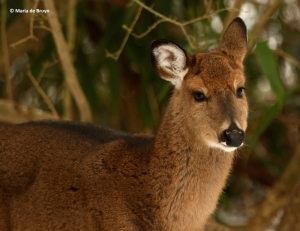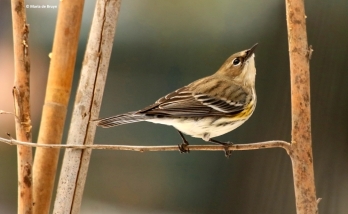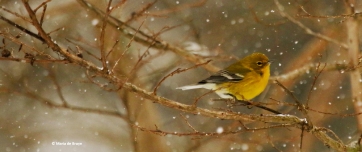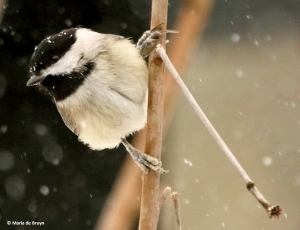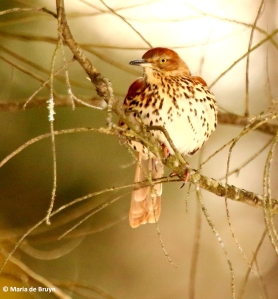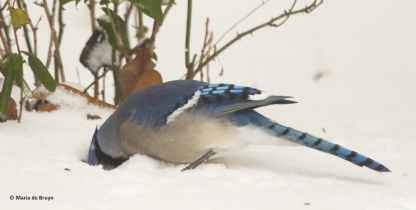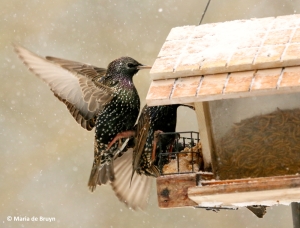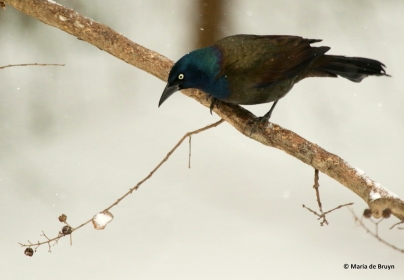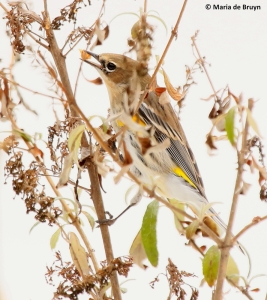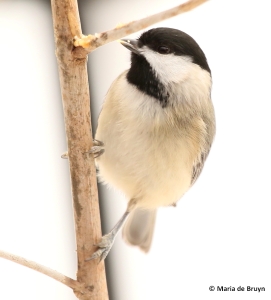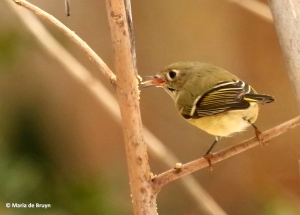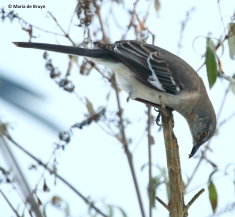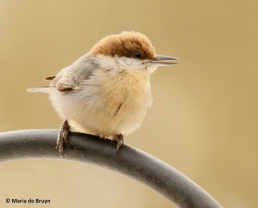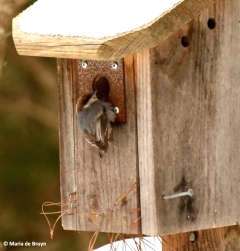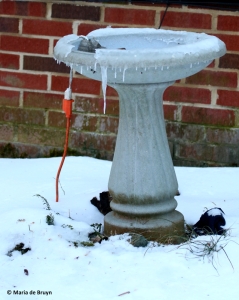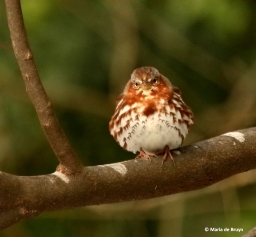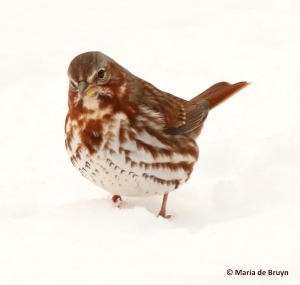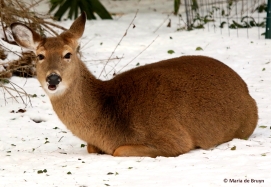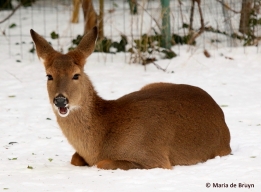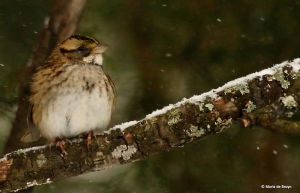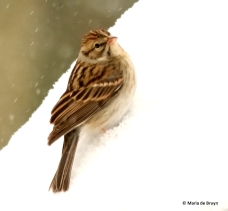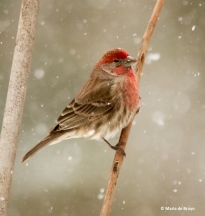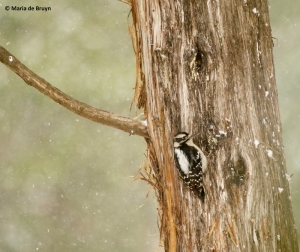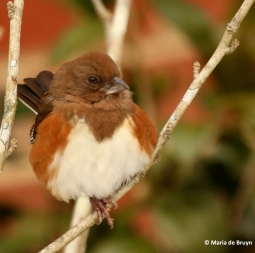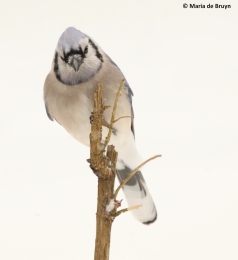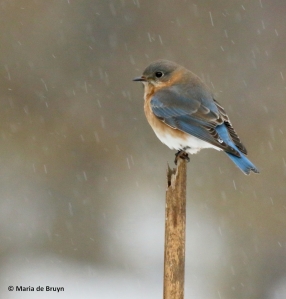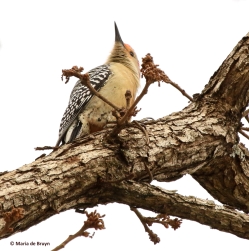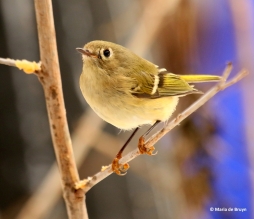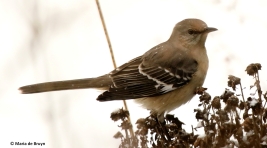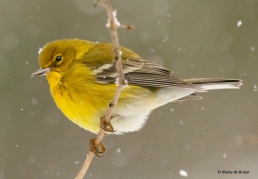 Judging from how many blogs I’ve written about birds, you might assume that I’m mainly a devotee of avian wildlife but that is certainly not the case. Without a doubt, I do love birds, but I really enjoy observing, learning about and photographing all kinds of other wildlife. Fortunately, my own yard provides me with some opportunities for that as I have a number of regular mammalian visitors. Sometimes, their visits entail a bit of drama but often their presence is quite peaceful.
Judging from how many blogs I’ve written about birds, you might assume that I’m mainly a devotee of avian wildlife but that is certainly not the case. Without a doubt, I do love birds, but I really enjoy observing, learning about and photographing all kinds of other wildlife. Fortunately, my own yard provides me with some opportunities for that as I have a number of regular mammalian visitors. Sometimes, their visits entail a bit of drama but often their presence is quite peaceful.
The Eastern chipmunks (Tamias striatus) like to visit the front porch to see if there’s something of interest among the potted plants or to take a drink from a water source.
These cute little rodents are more than willing to mingle with the ground-feeding birds looking for seed under the feeders. They scurry away as fast as their little legs will carry them when birds of prey appear – and they can certainly run quickly!
When it’s very cold, I sometimes offer them a small tray of seed just for themselves on the porch. They scarf down the goodies, filling their cheek pouches to what seems like almost bursting before dashing away to store the goodies for later consumption.
 A pair of Eastern cottontail rabbits (Sylvilagus floridanus) lives in my yard and both mom and dad are very good about taking care of their young. I don’t see them much in the winter but expect they will be out and about again in the spring, doing their “leapfrogging” courtship ritual.
A pair of Eastern cottontail rabbits (Sylvilagus floridanus) lives in my yard and both mom and dad are very good about taking care of their young. I don’t see them much in the winter but expect they will be out and about again in the spring, doing their “leapfrogging” courtship ritual.
When it’s breeding season, I may see raccoons (Procyon lotor) in the daytime but lately they have been coming to the yard at night to pick up whatever seed is left on the ground from the daytime visitors. My wildlife cam caught a not-so-clear photo of this happening.
 Another visitor who mostly comes at night is the opossum (Didelphis virginiana), one of my favorites given their propensity to eat lots and lots of ticks! Many people seem to think that they are ugly or scary, but I actually think they are kind of cute.
Another visitor who mostly comes at night is the opossum (Didelphis virginiana), one of my favorites given their propensity to eat lots and lots of ticks! Many people seem to think that they are ugly or scary, but I actually think they are kind of cute.
The largest mammalian visitors I see daily are the white-tailed deer (Odocoileus virginianus). I’ve loved them ever since I got to know a particular individual, whom I named Schatje (Dutch for “dear”). She approached me when she was a yearling and made friends with me, sitting next to me in the grass and thereafter bringing her newborn fawns to the yard right after their births. She unfortunately died in a car accident after some years, but through her I learned to really appreciate these mammals.
Some people dislike deer intensely because they eat their flowers and prized shrubs. But I’ve found that consistent application of a deer repellent on my plants keeps them off the vegetation that I want to preserve. Also, I let them eat bird seed and sometimes apple slices that I put out for the ground-feeding birds like white-throated sparrows, Eastern towhees, dark-sided juncos, American crows (the apple lovers) and brown thrashers.
 So I’ve been watching the deer for many years now and a very odd occurrence happened over the past half year. At least four deer have appeared with broken hind legs or feet. When “Mama”, a doe with twins, showed up with a terrible break on her leg, I wondered if it happened when she jumped a fence. The bone was jutting out and it was obviously very painful. She hobbled on three legs.
So I’ve been watching the deer for many years now and a very odd occurrence happened over the past half year. At least four deer have appeared with broken hind legs or feet. When “Mama”, a doe with twins, showed up with a terrible break on her leg, I wondered if it happened when she jumped a fence. The bone was jutting out and it was obviously very painful. She hobbled on three legs.
 What was amazing was the fact that her two-year-old son began caring for her. He already had a nice set of antlers and by rights should have left to join the stag group in the neighborhood, but he stayed with her and tended the wound, licking it, and also grooming her! I had not heard of a stag doing that before, so I named him Sweetie. He stayed with her for months!
What was amazing was the fact that her two-year-old son began caring for her. He already had a nice set of antlers and by rights should have left to join the stag group in the neighborhood, but he stayed with her and tended the wound, licking it, and also grooming her! I had not heard of a stag doing that before, so I named him Sweetie. He stayed with her for months!
Mama kept caring for her twins (a male and female). (The past couple years, she had only had male offspring so that cut down on the number of deer we might otherwise have had). And she tended her wound on her own as well.
Mama also had to withstand the advances of the dominant neighborhood stag, who was intent on mating with her. Sweetie tried to be there to fend off the interloper, but he had to give in and move off as he was no match for the big buck. Mama tried to get away, but he kept trying to mount her – unsuccessfully, since her back quarters would collapse as she could not bear any weight on the broken leg. She finally got away and ran, which must have been terribly painful for her.
Mama could not stand up for herself with the hurt leg so she began being bullied by another doe who showed up. That deer, who I called Bossy, was ill-tempered and a bit nasty; she even would chase her own son away from seed on the ground, even when her son also got a broken leg!
Then two adult males turned up with breaks – one had a broken foot. I wondered if someone was feeding them deer corn, which can be bad for their health and affect their hooves so that perhaps leg breaks would happen more easily. Or was someone taking potshots at them? It remains a mystery, but I’ve learned that the deer can overcome something like this although the healing takes months.
And then we come to my “nemesis” yard mammal, the Eastern gray squirrel (Sciurus carolinensis). As all bird-feeding people know, squirrels will do their utmost to eat all and any bird food that is put out — this has generated an industry devoted to producing squirrel baffles and “squirrel-proof” feeders. Even when I had smeared a bit of suet on a holly bush for the ruby-crowned kinglet who was sometimes crowded away from the feeder, a squirrel discovered the treat there and consumed what s/he could.
 I’ve been fairly fortunate in having the baffles work until recently, when a couple squirrels used their little brains to figure out ways to get around them. It was my belief that I had put the feeder poles sufficiently far from the roof or large tree branches so that the squirrel couldn’t make the leap. One kept trying over and over and finally succeeded in lengthening his/her “long jump”!
I’ve been fairly fortunate in having the baffles work until recently, when a couple squirrels used their little brains to figure out ways to get around them. It was my belief that I had put the feeder poles sufficiently far from the roof or large tree branches so that the squirrel couldn’t make the leap. One kept trying over and over and finally succeeded in lengthening his/her “long jump”!
I moved the poles further away. But two poles were about five feet apart and I then saw a squirrel use a strategy that really looked very clever to me. S/he would take a run at one pole, launch him/herself onto the pole at high velocity just under the baffle and then turn to vault from that height up and over the baffles on the neighboring pole! I really did admire the creature’s ingenuity and gained a new respect for their intelligence.
After moving the feeder poles further apart, I then noticed that a couple feeders on one pole were being emptied quickly. Looking out my window one day, I saw a squirrel perched atop the pole, enjoying seed after having managed to move the baffles down the pole. How was s/he doing that?
I set aside time to watch and discovered the squirrel’s secret.
The animal was hanging onto the raccoon baffle, biting it and jerking down at the same time. This eventually loosened the screws in the apparatus on which the baffle rested so that the baffle finally slid down the pole!
The screws have now been tightened and the next move is up to the squirrels. They are clever and tenacious. This was further brought home to me when a red-tailed hawk (Buteo jamaicensis) recently landed on a squirrel nest and did its best to extricate the mammal with its claws. The hawk eventually had to leave without its envisioned meal.
The yard mammals are certainly entertaining. If any of you readers have had interesting experiences with them, I’d love to hear about them in comments on this blog’s page! (Except for cats running free outside – goodbye from my two indoor cats, Ogi and Moasi!)





































 A
A












